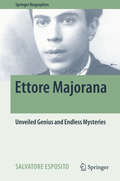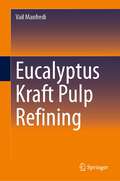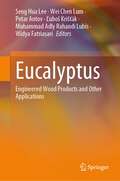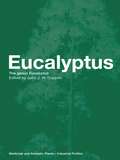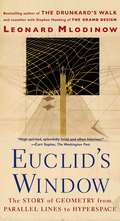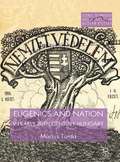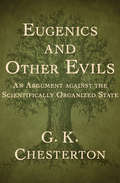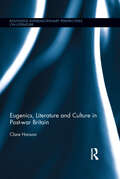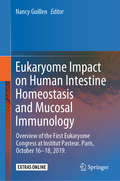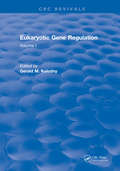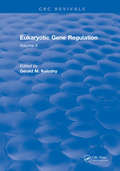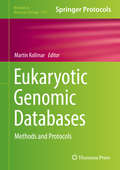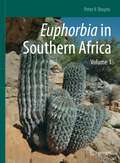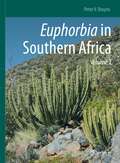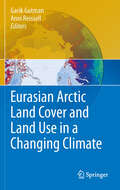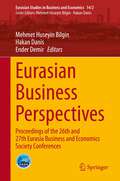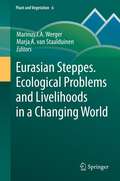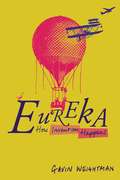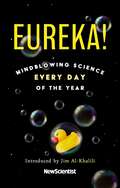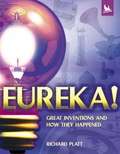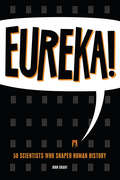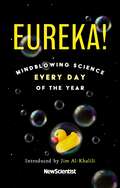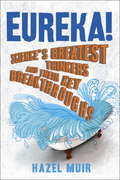- Table View
- List View
Ettore Majorana
by Salvatore EspositoHISTORICAL PRELUDE Ettore Majorana's fame solidly rests on testimonies like the following, from the evocative pen of Giuseppe Cocconi. At the request of Edoardo Amaldi, he wrote from CERN (July 18, 1965): "In January 1938, after having just graduated, I was invited, essen#65533; tially by you, to come to the Institute of Physics at the University in Rome for six months as a teaching assistant, and once I was there I would have the good fortune of joining Fermi, Bernardini (who had been given a chair at Camerino a few months earlier) and Ageno (he, too, a new graduate), in the research of the products of disintegration of /-L "mesons" (at that time called mesotrons or yukons), which are produced by cosmic rays [ . . . ] "It was actually while I was staying with Fermi in the small laboratory on the second floor, absorbed in our work, with Fermi working with a piece of Wilson's chamber (which would help to reveal mesons at the end of their range) on a lathe and me constructing a jalopy for the illumination of the chamber, using the flash produced by the explosion of an aluminum ribbon short circuited on a battery, that Ettore Majorana came in search of Fermi. I was introduced to him and we exchanged few words. A dark face. And that was it.
Eucalyptus Kraft Pulp Refining
by Vail ManfrediThis book presents a brief history of papermaking followed by comments regarding wood as a source of fibers, including its chemical and anatomical characteristics and the influence of these aspects on the quality of the pulp produced. In addition, the author describes the effects of the pulping process, mainly a chemical process, on pulp quality and how these wood characteristics influence both the refining process as the quality of the final paper. The book further provides a broad discussion, based on experimental results, on the contribution of the main operating refining variables and the main strategies that can be used industrially to optimize the operating results. From this evaluation, the parameter that complements the specific edge load theory is identified. This parameter is related to the retention time of the fiber flocs inside the refiner.
Eucalyptus: Engineered Wood Products and Other Applications
by Seng Hua Lee Widya Fatriasari Wei Chen Lum Petar Antov Ľuboš Krišťák Muhammad Adly Rahandi LubisThis book highlights the world distribution of eucalyptus plantations and the recent state of research on the utilization of planted eucalyptus for engineered wood products (EWPs) manufacturing. EWPs such as particleboard, fiberboard, oriented strand board, laminated veneer lumber, plywood, glue-laminated lumber, and cross-laminated lumber are highlighted. Eucalyptus is the main fiber resource for the pulp and paper industries in developed countries. Timber and fibers extracted from eucalyptus have long been utilized for solid wood and manufacturing of medium-density fiberboard. Other uses of eucalyptus such as pulp and paper, fuels, and chemical feedstocks are also discussed. Economic, social, and environmental assessments of eucalyptus products are presented.
Eucalyptus: The Genus Eucalyptus
by John J. W. CoppenEucalyptus, a genus of over 800 species, is a multiproduct crop par excellence. Not only is it grown for timber, pulp and fuelwood, but, as the Aborigines discovered thousands of years ago, it has numerous medicinal and aromatic properties. Since the first commercial distillation of eucalyptus oil 150 years ago, a vast array of eucalyptus-based pro
Euclid’s Window: The Story of Geometry from Parallel Lines to Hyperspace
by Leonard MlodinowMlodinow brilliantly and delightfully leads us on a journey through five revolutions in geometry, from the Greek concept of parallel lines to the latest notions of hyperspace. Here is an altogether new, refreshing, alternative history of math revealing how simple questions anyone might ask about space -- in the living room or in some other galaxy -- have been the hidden engine of the highest achievements in science and technology. Based on Mlodinow's extensive historical research; his studies alongside colleagues such as Richard Feynman and Kip Thorne; and interviews with leading physicists and mathematicians such as Murray Gell-Mann, Edward Witten, and Brian Greene, Euclid's Window is an extraordinary blend of rigorous, authoritative investigation and accessible, good-humored storytelling that makes a stunningly original argument asserting the primacy of geometry. For those who have looked through Euclid's Window, no space, no thing, and no time will ever be quite the same.
Eugenics and Nation in Early 20th Century Hungary
by Marius TurdaIn 1900 Hungary was a regional power in Europe with imperial pretensions; by 1919 it was crippled by profound territorial, social and national transformations. This book chronicles the development of eugenic thinking in early twentieth-century Hungary, examining how eugenics was an integral part of this dynamic historical transformation.
Eugenics and Other Evils: An Argument against the Scientifically Organized State (Mobi Classics Ser.)
by G. K. ChestertonG. K. Chesterton's highly influential treatise on one of the most controversial topics of the early twentieth century When G. K. Chesterton first published Eugenics and Other Evils in 1922, he seemed to be the lone voice of reason against the fashionable concept of selectively breeding a population for "desirable" traits. Though later generations came to associate eugenics with the horrors of the Third Reich, worldwide support for the philosophy was at an all-time high when Chesterton penned this brave and prophetic work. His unique combination of somber analysis and coruscating wit produces an argument too persuasive to ignore. Eugenics and Other Evils showcases Chesterton at the height of his rhetorical powers. His discussion of capitalism, socialism, and the concerns that guide our moral decisions is as pertinent today as the day it was penned. This ebook has been professionally proofread to ensure accuracy and readability on all devices.
Eugenics, Literature, and Culture in Post-war Britain (Routledge Interdisciplinary Perspectives on Literature)
by Clare HansonThis book explores eugenics in its wider social context and in literary representations in post-war Britain. Drawing on a wide range of sources in medicine, social and educational policy, genetics, popular science, science fiction, and literary texts, Hanson tracks the dynamic interactions between eugenic ideas across diverse cultural fields, demonstrating the strength of the eugenic imagination. Challenging assumptions that eugenics was fatally compromised by its association with Nazi atrocities, or that it petered out in the context of changed social attitudes in an egalitarian post-war society, the book demonstrates that eugenic thought not only persisted after 1945, but became more prominent. Throughout, eugenics is defined as a cultural movement, rather than more narrowly as a science, and the study is focused on its border-crossing capacity as a ‘style of thought.’ By tracing the expression of eugenic ideas across disciplinary boundaries and in both high and low culture, this book demonstrates the powerful and pervasive influence of eugenics in the post-war years. Authors visited include Raymond Williams, John Braine, Agatha Christie, Muriel Spark, Anthony Burgess, Doris Lessing, and J.G. Ballard.
Eukaryome Impact on Human Intestine Homeostasis and Mucosal Immunology: Overview of the First Eukaryome Congress at Insitut Pasteur. Paris, October 16–18, 2019.
by Nancy GuillenMultiple demographic or economic parameters contribute to the origin of emerging infections, for example: poverty, urbanization, climate change, conflicts and population migrations. All these factors are a challenge to assess the impact (present and future) of parasitic diseases on public health. The intestine is a major target of these infections; it is a nutrient-rich environment harbouring a complex and dynamic population of 100 trillion microbes: the microbiome. Most researches on the microbiome focus on bacteria, which share the gut ecosystem with a population of uni- and multi cellular eukaryotic organisms that may prey on them. Our interest focuses on the families of eukaryotic microbes inhabiting the intestine, called “intestinal eukaryome”, that include fungi, protists and helminths. Knowledge on the reciprocal influence between the microbiome and the eukaryome, and on their combined impact on homeostasis and intestinal diseases is scanty and can be considered as an important emerging field. Furthermore, the factors that differentiate pathogenic eukaryotes from commensals are still unknown. This book presents an overview of the science presented and discussed in the First Eukaryome Congress held from October 16th to 18th, 2019 at the Pasteur Institute in Paris.This book covers the following topics:Phylogenetic, prevalence, and diversity of intestinal eukaryotic microbes; and their (still enigmatic) historical evolution and potential contributions to mucosal immune homeostasis.Integrative biology to study the molecular cell biology of parasite-host interactions and the multiple parameters underlining the infectious process.The exploitation of tissue engineering and microfluidics to establish three-dimensional (3D) systems that help to understand homeostasis and pathological processes in the human intestine.
Eukaryotic Gene Regulation: Volume I
by Gerald M. KolodnyThe cause of cancer and its many manifestations is at present unknown. Since many of its manifestations, including is control of cell division, appear to represent abnormal patterns of gene expression, studies of the regulation of gene expression nwill provide important insights in the understanding and treatment of cancer. This volume attempts to present some of the recent work on regulation of gene expression in eukaryotic cells.
Eukaryotic Gene Regulation: Volume II
by Gerald M. KolodnyThe cause of cancer and its many manifestations is at present unknown. Since many of its manifestations, including is control of cell division, appear to represent abnormal patterns of gene expression, studies of the regulation of gene expression nwill provide important insights in the understanding and treatment of cancer. This volume attempts to present some of the recent work on regulation of gene expression in eukaryotic cells.
Eukaryotic Genomic Databases: Methods And Protocols (Methods in Molecular Biology #1757)
by Martin KollmarThis volume explores databases containing genome-based data and genome-wide analyses. This book covers databases from all eukaryotic taxa, except plants. The chapters describe database contents and classic use-cases, which assist in accessing eukaryotic genomic data and encouraging comparative genomic research. Written in the highly successful Methods in Molecular Biology series format, chapters include introductions to their respective topics, step-by-step, readily reproducible computational protocols, and tips on troubleshooting and avoiding known pitfalls.Cutting-edge and authoritative, Eukaryotic Genomic Databases: Methods and Protocols is a valuable resource for geneticists and molecular biologists who are interested in the latest eukaryotic genomics data.The chapters 'PomBase: The Scientific Resource for Fission Yeast' and 'The Ensembl Genome Browser: Strategies for Accessing Eukaryotic Genome Data' are available open access under a CC BY 4.0 license via link.springer.com.
Euphorbia in Southern Africa: Volume 1
by Peter V. BruynsThis book presents a new account of Euphorbia in southern Africa. Euphorbia is the second largest genus of plants in the world. Southern Africa enjoys a high diversity in Euphorbia and 170 species occur here naturally. Of these 170 species, 128 or 74% are endemic. Where most species of Euphorbia in the northern hemisphere are herbs or shrubs, most of those in southern African are succulent. These succulents range from small, almost geophytic forms where the tuber is larger than the above-ground parts to huge trees 6 to 15 m or more in height. Many of them are spiny. There are also small numbers of herbaceous species in southern Africa and many of these are also dealt with here. The last account of the succulent species for southern Africa was published in 1941 and much new data has accumulated since then. Our understanding of the relationships of the species in Euphorbia has also been greatly enhanced by recent analyses of DNA-data, which led to new and unexpected results. From this new information an entirely new classification was developed, in which Euphorbia was divided into four subgenera. This provides the taxonomic framework for the presentation of our species here. Around ten new species have been described and these are presented in detail for the first time. This monograph is made up of two volumes. Volume 1 contains an extensive introductory chapter with an overview of the genus in the region, emphasizing many of its important and distinctive features. This is followed by Chapter 2, which deals with subgenus Athymalus. Of the four subgenera, this one is by far the most diverse in southern Africa, with 80 species. Volume 2 contains Chapters 3 (subg. Chamaesyce, 34 species), 4 (subg. Esula, 11 species) and 5 (subg. Euphorbia, 45 species), as well as an additional Chapter 6 covering the remarkable diversity of subg. Euphorbia in Moçambique. Each of Chapters 2 to 5 includes a key to all the species, followed by an account of each of them. This account includes synonymy, a description, data on distribution and habitat, line-drawings of floral features and other diagnostic details, notes on how the species is distinguished from its closest relatives and a brief history of its discovery. Several colour photographs are included for each species, illustrating its habitat, vegetative habit and flowering features, demonstrating key points distinguishing it from others and often showing its variability. Euphorbia is an important component of the vegetation in many of the drier parts of southern Africa. This book is based on a thorough evaluation of the vast herbarium record for southern African members of Euphorbia, on the extensive field-work conducted in the region and the wide taxonomic experience of the author. It is believed that both the professional botanist and the layman will find much that is new and informative in this monograph.
Euphorbia in Southern Africa: Volume 2
by Peter V. BruynsThis book presents a new account of Euphorbia in southern Africa. Euphorbia is the second largest genus of plants in the world. Southern Africa enjoys a high diversity in Euphorbia and 170 species occur here naturally. Of these 170 species, 128 or 74% are endemic. Where most species of Euphorbia in the northern hemisphere are herbs or shrubs, most of those in southern African are succulent. These succulents range from small, almost geophytic forms where the tuber is larger than the above-ground parts to huge trees 6 to 15 m or more in height. Many of them are spiny. There are also small numbers of herbaceous species in southern Africa and many of these are also dealt with here. The last account of the succulent species for southern Africa was published in 1941 and much new data has accumulated since then. Our understanding of the relationships of the species in Euphorbia has also been greatly enhanced by recent analyses of DNA-data, which led to new and unexpected results. From this new information an entirely new classification was developed, in which Euphorbiawas divided into four subgenera. This provides the taxonomic framework for the presentation of our species here. Around ten new species have been described and these are presented in detail for the first time.This monograph is made up of two volumes. Volume 1 contains an extensive introductory chapter with an overview of the genus in the region, emphasizing many of its important and distinctive features. This is followed by Chapter 2, which deals with subgenus Athymalus. Of the four subgenera, this one is by far the most diverse in southern Africa, with 80 species. Volume 2 contains Chapters 3 (subg. Chamaesyce, 34 species), 4 (subg. Esula, 11 species) and 5 (subg. Euphorbia, 45 species), as well as an additional Chapter 6 covering the remarkable diversity of subg. Euphorbia in Moçambique. Each of Chapters 2 to 5 includes a key to all the species, followed by an account of each of them. This account includes synonymy, a description, data on distribution and habitat, line-drawings of floral features and other diagnostic details, notes on how the species is distinguished from its closest relatives and a brief history of its discovery. Several colour photographs are included for each species, illustrating its habitat, vegetative habit and flowering features, demonstrating key points distinguishing it from others and often showing its variability.Euphorbia is an important component of the vegetation in many of the drier parts of southern Africa. This book is based on a thorough evaluation of the vast herbarium record for southern African members of Euphorbia, on the extensive field-work conducted in the region and the wide taxonomic experience of the author. It is believed that both the professional botanist and the layman will find much that is new and informative in this monograph.
Eurasian Arctic Land Cover and Land Use in a Changing Climate
by Garik Gutman Anni ReissellThis volume is a compilation of studies on interactions of land-cover/land-use change with climate in a region where the climate warming is most pronounced compared to other areas of the globe. The climate warming in the far North, and in the Arctic region of Northern Eurasia in particular, affects both the landscape and human activities, and hence human dimensions are an important aspect of the topic. Environmental pollution together with climate warming may produce irreversible damages to the current Arctic ecosystems. Regional land-atmosphere feedbacks may have large global importance. Remote sensing is a primary tool in studying vast northern territories where in situ observations are sporadic. State-of-the-art methods of satellite remote sensing combined with GIS and models are used to tackle science questions and provide an outlook of current land-cover changes and potential scenarios for the future. Audience: The book is a truly international effort involving U.S. and European scientists. It is directed at the broad science community including graduate students, academics and other professionals in this field.
Eurasian Business Perspectives: Proceedings of the 26th and 27th Eurasia Business and Economics Society Conferences (Eurasian Studies in Business and Economics #14/2)
by Mehmet Huseyin Bilgin Hakan Danis Ender DemirThis book presents selected theoretical and empirical papers from the 26th and 27th Eurasia Business and Economics Society (EBES) Conferences, held in Prague, Czech Republic, and Bali, Indonesia. Covering diverse areas of business and management in various geographic regions, it addresses a range of current topics, such as human resources, management, SMEs and marketing. It also includes related studies that analyze management and marketing aspects, e.g. workplace learning, gamification in business, resilience and entrepreneurship, the use of IT tools in small businesses, and dynamic marketing capabilities in an intercultural environment.
Eurasian Steppes. Ecological Problems and Livelihoods in a Changing World
by Marinus J.A. Werger Marja A. van StaalduinenSteppes form one of the largest biomes. Drastic changes in steppe ecology, land use and livelihoods came with the emergence, and again with the collapse, of communist states. Excessive ploughing and vast influx of people into the steppe zone led to a strong decline in nomadic pastoralism in the Soviet Union and China and in severely degraded steppe ecosystems. In Mongolia nomadic pastoralism persisted, but steppes degraded because of strongly increased livestock loads. After the Soviet collapse steppes regenerated on huge tracts of fallow land. Presently, new, restorative steppe land management schemes are applied. On top of all these changes come strong effects of climate change in the northern part of the steppe zone. This book gives an up-to-date overview of changes in ecology, climate and use of the entire Eurasian steppe area and their effects on livelihoods of steppe people. It integrates knowledge that so far was available only in a spectrum of locally used languages.
Eureka
by Gavin WeightmanTracing the long pre-history of five twentieth-century inventions which have transformed our lives, Gavin Weightman reveals a fantastic cast of scientists and inspired amateurs whose ingenuity has given us the airplane, television, bar code, personal computer, and mobile phone. Not one of these inventions can be attributed to a lone genius who experiences a moment of inspiration. Nearly all innovations exist in the imagination before they are finally made to work by the hard graft of inventors who draw on the discoveries of others. While the discoveries of scientists have provided vital knowledge which has made innovation possible, it is a revelation of Weightman's study that it is more often than not the amateur who enjoys the "eureka moment" when an invention works for the first time. Filled with fascinating stories of struggle, rivalry, and the ingenuity of both famous inventors and hundreds of forgotten people, Weightman's captivating work is a triumph of storytelling that offers a fresh take on the making of our modern world. "
Eureka! Great Inventions and How They Happened
by Richard PlattEureka! Looks at the instances in which some of the world's greatest inventions were conceived and explains how creative genius has enabled some individuals to look right through a problem and come up with a solution that has eluded rivals. From the excitement of Newton's historic discovery of the laws of gravity to the more recent creation of Teflon, this fascinating book illuminates an amazing variety of inventions, as well as the moments of inspiration (and sometimes perspiration) behind them.
Eureka! It's an Airplane!
by Jeanne BendickUncovers the chain of discoveries--dating back to the ancient Greeks and including the contributions of the Wright brothers--that led to the invention of the modern airplane.
Eureka!: 50 Scientists Who Shaped Human History
by John GrantGalileo, Einstein, Curie, Darwin, Hawking — we know the names, but how much do we really know about these people? Galileo gained notoriety from his battle with the Vatican over the question of heliocentrism, but did you know that he was also an accomplished lute player? And Darwin of course discovered the principle by which new species are formed, but his bold curiosity extended to the dinner table as well. (And how many people can say they've eaten an owl!) In Eureka! John Grant — author of Debunk It!, Discarded Science, Spooky Science and many others — offers fifty vivid portraits of groundbreaking scientists, focusing not just on the ideas and breakthroughs that made them so important but also on their lives and their various...quirks.
Eureka!: Mindblowing Science Every Day of the Year
by New ScientistIntroduced by Jim Al-KhaliliCould you surf down an erupting volcano?Why do zebras have stripes?Are you breathing the same air as Leonardo da Vinci?Are there any green mammals?Why do pineapples have spikes?Why do songs get stuck in your head?What happens when black holes collide?Can you extract your DNA?New Scientist has been a treasure trove of fascinating and surprising questions and answers for over a decade. From how to measure the speed of light using chocolate, to why dogs howl at sirens, Eureka! brings together 365 mindblowing questions, fascinating facts and exciting experiments.If you've ever wondered how to escape quicksand, what would happen if the moon vanished, and why cats (nearly) always land on their feet, you've come to the right place.
Eureka!: Mindblowing Science Every Day of the Year
by New ScientistIntroduced by Jim Al-KhaliliCould you surf down an erupting volcano?Why do zebras have stripes?Are you breathing the same air as Leonardo da Vinci?Are there any green mammals?Why do pineapples have spikes?Why do songs get stuck in your head?What happens when black holes collide?Can you extract your DNA?New Scientist has been a treasure trove of fascinating and surprising questions and answers for over a decade. From how to measure the speed of light using chocolate, to why dogs howl at sirens, Eureka! brings together 365 mindblowing questions, fascinating facts and exciting experiments.If you've ever wondered how to escape quicksand, what would happen if the moon vanished, and why cats (nearly) always land on their feet, you've come to the right place.
Eureka!: Science's Greatest Thinkers and Their Key Breakthroughs
by Hazel MuirFrom Aristotle's pioneering research into animal biology to Harvey's theory of the circulation of the blood; from Copernicus's theory of the heliocentric universe to Carl Sagan's speculations on extraterrestrial life; and from Einstein's theory of Relativity to Heisenberg's uncertainty principle, Eureka! condenses the essential biographies and principal discoveries of the world's most important scientistsinto 300 bite-sized entries. Spanning the full spectrum of scientific disciplines - including physics, biology, earth science, cosmology, chemistry, archaeology and behavioural science - this book is the perfect introduction to the pioneering work of scientists throughout the ages.
